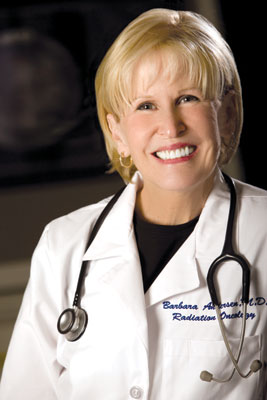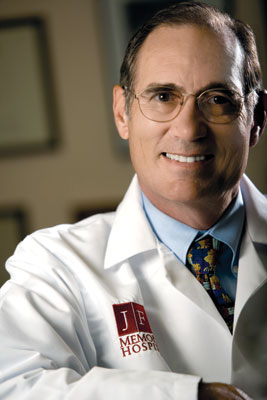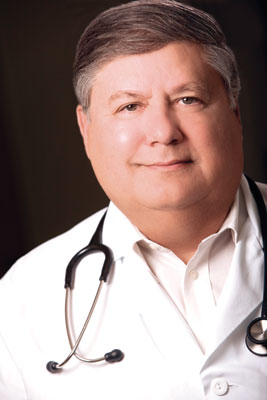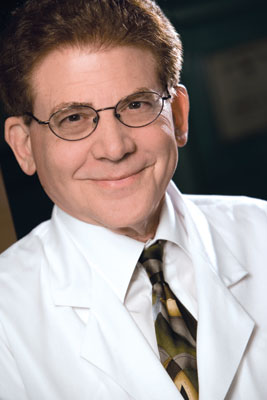
Meet Coachella Valley’s top 72 physicians in 38 specialties as chosen by their peers — and vetted by the experts
Finding the right doctor need not be daunting and frustrating. A strong recommendation from someone you trust goes a long way. This is why Palm Springs Life commissioned New York-based Castle Connolly Medical Ltd. to study the area’s doctors and report back.
Castle Connolly’s physician-led team of researchers follows a rigorous screening process to select top doctors on both the national and regional levels. Using mail and telephone surveys and electronic ballots, they ask area physicians and the medical leadership of area hospitals to identify highly skilled, exceptional doctors. The team carefully screens doctors’ educational and professional experience before making a final selection of physicians most highly regarded by their peers in each specialty. The firm has conducted similar studies for publications nationally (Town & Country, Good Housekeeping, Redbook) and regionally (Chicago, San Francisco). It also publishes the book America’s Top Doctors. Physicians selected for the Palm Springs Life “Top Doctors” feature may also appear as regional Top Doctors online at www.castleconnolly.com or in one of Castle Connolly’s Top Doctors guides, such as America’s Top Doctors or America’s Top Doctors for Cancer. The books are available online, in bookstores, or by calling (800) 399-3627.
If your doctor does not appear on this list, it doesn’t mean she or he is not worthy. In fact, some of our favorites did not make the cut, and we continue to stand by them. We hope this list helps you refine your medical decisions. Preview the 2008 Top Doctor List.
— The Editors
Personal experience
Barbara Anderson’s own bout with cancer gives her a depth of understanding that guides her relationships with patients
When, as a UCLA medical student, Barbara Anderson embarked on a career in radiation oncology, she never imagined that she would become her own best teacher. But in 1999, after teaching at UCLA and launching private practices in Los Angeles and Idaho, she found herself on the other side of the examination table. At the age of 46, she was diagnosed with breast cancer.
 “It’s one thing to be the doctor,” she says. “It’s completely different when you’re the patient. You learn a lot more by being on the other side, especially if you are being treated with the same treatments you are giving your patients. I went though surgery, radiation, chemotherapy. The whole experience helped me understand what my patients are going through.”
“It’s one thing to be the doctor,” she says. “It’s completely different when you’re the patient. You learn a lot more by being on the other side, especially if you are being treated with the same treatments you are giving your patients. I went though surgery, radiation, chemotherapy. The whole experience helped me understand what my patients are going through.”
Today, with a battery of firsthand knowledge, Anderson practices at Desert Regional Medical Center, where daily interaction with patients takes on expanded meaning. “It’s a good thing for patients to know that their doctors have a real-life understanding of what they and their families are facing,” she says, “not to mention that it’s nice for a lot of breast cancer patients to have a female doctor.”
On any given day, she and her partner, Dr. Peter Greenberg (also selected among the Palm Springs Life 2008 Top Doctors), connect with between 10 and 30 patients at Desert Regional Medical Center’s Comprehensive Cancer Center. “We see new patients who have just been diagnosed and need to know what to do next, patients who come in for daily radiation, and follow-up patients who we’ve treated in the past. Sometimes we need to be in three places at once. But I love the fact that even though the technology has evolved, the basic sitting down and talking to the patient and their family hasn’t changed.
“I truly believe that what I have to offer can really make a difference in my patients’ lives. It certainly makes a difference in my life,” Anderson says. “When I was going through treatment myself, I had patients who were literally dying but were sending me cards and including me in their prayers. It kept me going.”
It’s this same attention to relationships that keeps her grounded with her husband, also a radiation oncologist, and two daughters. “If I’m not in the office, I’m driving them around and making sure that everyone is where they need to be. That all has to go on too — the everyday life stuff.”
Anderson’s dual experiences as doctor and patient create the indelible symbiosis that makes her one of the desert’s top doctors in the treatment of cancer.
“Becoming a patient myself certainly wasn’t something I’d planned for,” she says. “But these things happen in life, and you learn what you can from them. I’m so fortunate to be able to do this for a living and feel very lucky to have known the patients I’ve treated. As much as I can help them, they’ve given even more back to me.”
Walking the line
 Jonathan Braslow helps ease arthritis — even when patients can’t pay
Jonathan Braslow helps ease arthritis — even when patients can’t pay
With an impressive medical lineage that includes grandparents, parents, and siblings, Jonathan Braslow naturally cultivated a love for his occupation. “I used to go on rounds with my dad when I was a kid,” he says. “I got a real sense of what he did. Once, when we were on vacation in Catalina, he dislocated his shoulder. I remember watching him [put it back in]. It made a big impression on me.”
Braslow went on to design some of the more widely used knee-replacement instruments and implants. The first time he performed a surgery using an implant and instruments he had designed, the experience stood out as one of those moments where precision and passion merge. “I’ll never forget it! I’d always loved design and development and had worked with a number of orthopedic companies throughout the years, and then to have it all come together was great,” he says.
Braslow’s ingenuity and willingness to experiment led him to serve on an international development team for Zimmer Corp., where he has been instrumental in designing the next generation of partial-knee replacements. “I love the challenge,” he says. “You’re always coming across problems: how to do it efficiently, reproducibly, and develop instruments so that other surgeons can do the operation and get the implants in the way they should be.”
As medical director of the Arthritis Institute at John F. Kennedy Memorial Hospital, Braslow addresses all aspects of joint-related issues. “Arthritis refers to a gradual degeneration or damage to the joint surface, and it can be caused by lots of different things,” he explains. “We just try to relieve pain and return function. I like to think my patients become more than patients, but actually become friends. I love having the ability to get their knees functioning better and get them out of pain and enjoying their lives.”
This type of caring not only earned Braslow the 2007 Jane Wyman Humanitarian Award, but also called him to lend his skills to Operation Walk, an international foundation dedicated to helping individuals suffering from hip and knee pain. “We had a weekend in Indio where we saw a lot of patients who normally fall through the cracks because they don’t have insurance,” he says. “We had six orthopedists working throughout the weekend and did 18 surgeries in one day. It changed the lives of every single one of those people. Then we got the chance to go to Guatemala and Antigua and do joint replacements down there for a week. Especially for the patients down in South America, it’s so out of the possibility of what they could have attained otherwise. You look at all that’s out there and all that you can do — and then you change one person’s life dramatically. It’s wonderful.”
Outside of the office, life is no less dramatic. A glider pilot for three decades, Braslow can be found, whenever conditions are right, cutting lazy arcs high above the mountains. “I fly up over Idyllwild and all around the Santa Rosas. It really gives me a different perspective. I’m up there and everything down below is so little. And when I shut the motor down and get in a thermal and I’m going up 1,000 feet a minute, there’s nothing like it.”
Humanity in mind
 considers the concerns of his Parkinson’s patients as his own
considers the concerns of his Parkinson’s patients as his own
Neal Hermanowicz likes brains — their neurons, their genetic mysteries — and the real people attached to them. As medical director of the Philip & Carol Traub Parkinson’s Center at Eisenhower Medical Center, he spends his days counseling patients diagnosed with Parkinson’s, the neurodegenerative movement disorder that is notorious for altering the lives of both patients and their families. Providing information, guidance, and support are precisely the aspects of medicine that he loves.
“Early in my training, I found that I really liked the patients who came in with Parkinson’s. I was drawn to them. Because of the impact of the disease on their overall life, I like to spend time with them and really get a sense of each patient and who they are and formulate a plan of how I can help them.”
Hermanowicz’s path began to take shape in his teens and was emboldened by a philosophical stance largely influenced by the climate of the 1960s. “It seemed to me that medicine would give me a way to do something that was not totally self-serving, but would have a social impact,” he says. “I knew before I went to med school that I was going to specialize in illnesses that affect the brain. At the time, I didn’t really know what these specialties consisted of or even what neurology was. But I found the concept of dealing with the brain very attractive.”
His road to the desert took him from the University of Illinois to MIT where he pursued graduate work in the sciences. “MIT is a splendid school for someone who wants to be in a lab running experiments all day, but I realized very quickly that while I enjoyed being a student of chemistry and physics, I didn’t want to have a career in chemistry or physics,” he says. “I preferred humanity. I was interested in art and music and people. I knew that medicine would be one of those areas where I could get to know people well and hope to have a lasting and favorable impact on their lives.”
Hermanowicz entered Temple University Medical School at the age of 26. He moved for internships, fellowships, and appointments from Philadelphia, Pa., to Madison, Wis.; Ann Arbor, Mich.; Albuquerque, N.M.; and Chicago, Ill. Ten years ago, he moved to the desert.
Hermanowicz spends his free hours researching humanistic aspects of Parkinson’s disease: how it affects people, how they cope with the diagnosis, and how they share this information with their co-workers and families. He also serves as vice president of the Orange County Neurological Society and has established The California Parkinson’s Group, an advocacy group for people under the age of 50 who’ve been diagnosed with early-onset Parkinson’s, all the while practicing that rare form of ’60s-inspired altruism whereby his patients’ concerns truly become his own.
Distinctive in white
 Dr. Hugh Nasr likens his career to the investigative work of an officer in blue
Dr. Hugh Nasr likens his career to the investigative work of an officer in blue
Hugh Nasr specializes in the function of endocrine glands and hormones — and practices in the most humanistic terms. “I go into each patient [case] fresh; I don’t think of anyone as routine,” he says, emphasizing that endocrinology is acutely analytical and logic-driven. “Some people say it’s the most intellectual type of specialty medicine. It’s investigative — medical police work, if you will. Endocrinology is the investigation, the thinking process. What makes the human body tick. It’s not a structural, anatomical thing. It’s the hormonal interplay of the body.”
With each of his patients, he continues, he thinks of “all the possibilities, because for each of them, their experience is unique. It might be the third person that morning I’ve seen with a similar condition, but what they are feeling, what they are experiencing, it is personal to them; and I am always aware of that.”
The son of an Iranian diplomat, Nasr was born in Iran but sent to the United States during elementary school to avoid the turmoil that resulted in his home country’s 1953 coup d’etat. He ended up staying in the United States through college (Yale University) and medical school (Harvard University).
Nasr traces his interest in medicine to his family tree. “My father told me, ‘One thing for sure, you’re not going into politics.’ He said to keep clear of politics at all costs. His grandfather was an old-time doctor back in the 19th century in Iran, so there was a tradition of medicine in the family. My father tried medicine himself, but he fainted when he went into the cadaver room. So he figured his son could do something he never could.”
Nasr returned to Iran in the early 1970s after medical school and served as a professor of medicine at several institutions. When political strife once again forced him out of the country in 1979, he had a wife and children. He returned to the United States with the clothes on his back and a few thousand dollars.
In 1981, Nasr became the attending physician in internal medicine and endocrinology at Palm Springs Medical Center (since closed). Five years later, he opened a private practice and added geriatrics to his specialties. His offices are in Palm Springs and Yucca Valley.
Today his office displays not only the requisite diplomas, stacks of medical journals, and a desk covered in paperwork, but also family photos taken at weddings, parties, and graduations. There are photos of children and grandchildren — and the doctor himself on the golf course at Cimarrón Golf Resort after a 90-foot putt. The pictures reveal a life rich with experiences.
“I came from nothing,” Nasr says, a broad smile crossing his face, “twice.”
Rest assured
 Dr. Ronald Sneider helps patients breathe easy and get the sleep they need
Dr. Ronald Sneider helps patients breathe easy and get the sleep they need
Long before he became the medical director of the sleep lab at Eisenhower Medical Center, Dr. Ronald Sneider arose at an early hour to help his father, a second-generation scrap dealer in Chicago. “I remember getting up with my father at four o’clock in the morning to work, hauling barrels around and thinking, ‘This isn’t for me.’ These days, he likes getting out of bed to go to work.
“I love the challenge of medicine,” he says. “I love working with my patients. Plus, I think sleep has a lot to do with wellness. If you don’t get good sleep, it affects every facet of your life.”
Sneider initially harbored designs on an acting career. “Between the ages of 5 and 9, I went to acting school,” he says, noting that he landed roles in ads for Wrigley’s Spearmint Gum and Kool-Aid. “My father said, ‘If you’re a doctor, you’ll always have a job.’ He was right.” Today, in addition to practicing medicine, Sneider collects rare and antiquarian books, though he recently sold his vast collection of texts dating from the 17th century.
After graduating from Washington University in St. Louis, Mo., Sneider entered the University of Illinois’ Abraham Lincoln School of Medicine in 1970. Seven years later, he was named the medical director of Eisenhower’s pulmonary section — treating conditions and diseases related to the lungs — and in 1998 added the sleep laboratory to his responsibilities.
“I’ve never been afraid to befriend my patients,” Sneider says. “We’re kind of taught when we’re going through our training that you shouldn’t get too close, because you can’t make decisions. But I think it’s been a benefit over the years, not a downside. One of the really wonderful parts about being a doctor in the desert is meeting such incredible people. I don’t think I could have had a career anywhere and met the captains of industry, celebrities, and politicians, but also just the really great people that I’ve met here and be able to treat them.”
Sneider’s specialty in pulmonary medicine took hold in medical school and is still at the forefront of his career as he continues to publish in medical journals on topics ranging from the treatment of pulmonary disorders in AIDS patients to the value of prayer in alternative medicine. His work with the sleep center is an extension of a long-held interest, as sleeplessness is far more than insomnia most of the time, particularly in cases of apnea, a significant respiratory issue.
After 32 years in practice, he remains committed to his practice. “My horizon keeps lengthening as I go along,” says Sneider, who also enjoys golfing and spending time with his wife, Ellen, at their vacation home in Grass Valley. “I see myself practicing maybe 10 more years. A few [doctors] have been in practice at Eisenhower for nearly 40 years, so I’m still just a kid here.”